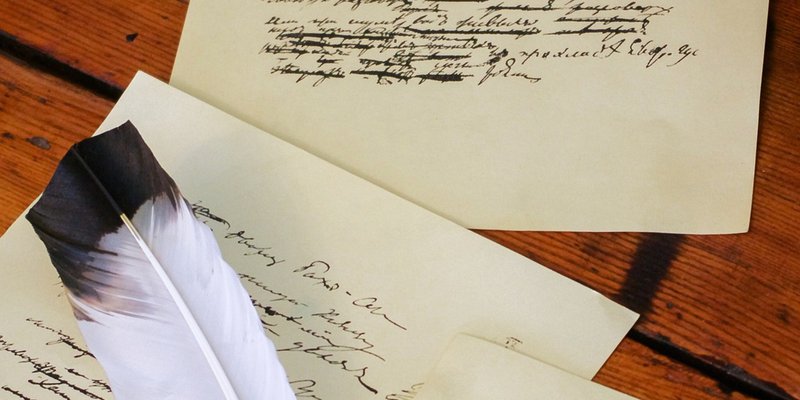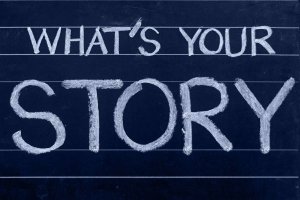
The StoryGrid, by Shawn Coyne, is meant for editors to help them fix stories that have already been written. By mastering the principles it presents on good storytelling, you can design a better story. What's cool for me is that I'm starting to believe I know how to do it.
I'm not 100% convinced I know how, but I'm getting there. I'm like at 78% convinced.
This article will not help you design a better story. This article will explain how I'm using StoryGrid principles in my story design efforts. I hope this will encourage and inspire you to design a better story yourself.

How we learn StoryGrid is how we learn anything
Learning to write a compelling story is not easy. The StoryGrid gives you a way to improve your storytelling skills but, like any new skill, it takes time to master. First, you must attempt something you haven't done before, make mistakes, get coaching, and practice.
You can't read the book over a weekend and up your craft by Monday. In fact, there is so much to think about that your writing may suffer until your brain has time to process everything.
It took me three weeks to read the book because I studied and pondered its lessons. I paced the house, thinking about how the points he made applied to other stories I'd read or written.
The book uses Silence of the Lambs as its case study, so I then read that book so I could experience what was discussed in detail, and feel how it worked as story.
Only then did I attempt to put to use the StoryGrid lessons in my own writing. It was a five week interruption from my writing but it felt like progress because I was ready to take a baby step forward in the right direction.

How to learn anything
Here is review of the learning process, applicable to everything in life:
- Specifically, you must go beyond your comfort zone and stretch yourself, attempting things you haven't done before
- Attempt new skills consciously, as if experimenting, and slowly, noticing everything that's involved
- Get a coach or feedback on what you're attempting, either in the technique or the result
- Practice intensely, focusing on the new skills
- Get good rest to allow your brain to reinforce the neural paths you're blazing with myelin
- Continue practicing, with feedback, to make the skill second nature
That's all there is to it, but you have to accept it will take an unknown amount of time to truly master new skills. It depends on the quality of your coaching, the intensity of your training, and your ability to rest and recover.

How to use StoryGrid
Like all great, modern story theories, StoryGrid is a simple formula that works like a Mad-Lib. Fill in some names and locations, and there you have your story outline, ready to be written by an artificial intelligence taught by machine learning.
Nope
It's not that simple to use StoryGrid. Shawn Coyne, the author, mentions more than once that it's not really meant for story design. Rather, he built it for editors to figure out how to fix stories.
What I've been doing the past year is develop a portion of the story, and then using StoryGrid principles to decide if it's not quite right, and how to fix it if it ain't.
With the novel I just completed (third draft), I wrote about 50,000 words and turned to StoryGrid to fix it. With that first draft, I felt in my bones it was not right. After a week of struggle, I had a much better design, and a way to rip out chunks of that first draft that weren't serving the story, and identified what I needed instead.
With the second draft, again I turned to StoryGrid to help me identify scenes without goals or stakes, pacing problems, and whether or not the theme was being served by each scene. It was brutally hard, but it got me to a solid third draft of 87,000 words.
Let's say you're starting from scratch. Here's how to use StoryGrid.

Start with a story seed
I'm currently working on the first draft of a novel that I thought of ten years ago. Ten.
I was doing a brainstorming exercise, came up with 100 story ideas, and whittled those down to five stories worth pursuing. This was one of them, but I never got around to writing it. Something was missing.
Back then, I couldn't describe the story beyond the premise description which was, roughly, "A scientist charged with conducting genetic experiments on herds of human beings violates his oath and the law by falling in love with one of his subjects."
What I couldn't figure out was how to setup this story, how to build the tension, and what was the big payoff at the end.
When you study StoryGrid, the concept of setup, build and payoff for every scene, every act, and the entire story, is repeated. What I realize now is that, for the past thirty years, I've been pretty bad at the setup, build, and payoff of novel-length stories. My novels were "a bunch of stuff happens to some guy" and then I would wrap it up.
I swear to god, two of my novels pretty much ended like the shrugging emoji: ¯_(ツ)_/¯
With this current story, the bunch of stuff I had in mind was so distasteful to me that I couldn't even approach the story for nine years. So it sat there until I took the time to work out who was the scientist, with whom did he fall in love, and how did that progress.
Once I did that, I realized the scientist thing wasn't going to work, and the story transformed. I found different characters with more at stake who could deliver the story I wanted to tell. It was quite thrilling, actually, to see how this new story emerged.

Find your genre
Practicing setup, build and payoff is absolutely the most useful thing I've gotten out of StoryGrid. But the way he has documented genre, and broken it down, completely blew my mind.
Outside of StoryGrid, the term "genre" is used loosely (romance, sci-fi, action), and sub-genres seem to emerge from out of the void (psychological thrillers, caper movies, dystopian sci-fi). Trying to think about genre was, for me, like walking into an anatomy lesson where all the bones of the human body are being described. I kind of know what femurs and ribs are, but when the other 279 bones are brought into the discussion, my eyes glaze over.
I was faking my knowledge of genre all these years.
In StoryGrid, genre is laid out in a chart and divided by content, style, and other categories. This allows you to figure out the external goal, internal goal, and how you'll tell the story.
Importance of Genre
I used to be a genre snob, thinking that writing in a genre was no better than being a pulp-fiction hack. Oh, how I was wrong.
Writing to genre allows you to meet the audience half-way with your storytelling. Everybody picking up your book has a set of expectations. Right or wrong, they have them, and those expectations matter to those readers. If you ignore the expectations of your genre, you'll disappoint your readers, and you are the big loser in that exchange.

StoryGrid and Genre
In Shawn Coyne's book, he goes deep on one (and only one) genre: serial-killer thriller. As the obligatory scenes and conventions of the genre are described, it makes perfect sense. It doesn't feel cheap at all. It feels complete.
When I finished reading StoryGrid, I wanted to know about many other genres. But that was going to take a lot of hard work.
Recently, the StoryGrid certified consultants have been publishing articles on storygrid.com about all the other genres. Put together, they're the missing chapter of the book. Read them, and suddenly almost every story you've ever read before in your life makes a little more sense.

Back to your story
Once you decide what genre your story fits into, study the conventions and obligatory scenes. Then, adapt your story to fit it. Again, this is not formula, and you can't use boilerplate to tell the story.
As with happened to me and my story, you may need to change your characters to fit the genre. You may need to lose some and add others. This is your creativity being called upon to design the story. You aren't just filling in a formula.
Use your creativity to find unique ways that your characters in your setting can fit the pattern (even if those obligatory scenes are "out of order") and you'll have overcome a huge hurdle in finding an audience for your story.
Choose the POV and Narrative Device
The other critical component of a story's design is the point of view from which the story will be (mostly) told, along with the narrative device employed.
These were missing from the story idea I had, but once I'd began using StoryGrid to organize my thoughts about the story, I could try various characters out as the POV. What I realized is that the initial protagonist didn't have enough at stake in the story (things were going to go her way) and it would be harder to build empathy for her.
From that realization came a younger sister of that first choice. She would by more sympathetic. Telling the story from her POV would allow me to tug at emotional heartstrings.
Given that, I decided I'd use a subjective third-person point of view, allowing me to share that characters thoughts in a way that would match the readers story knowledge, thus pulling the reader into the story through that character.

Create the Foolscap Global Story Grid for the story
Given all the stuff we just discussed, you can then create the cornerstone design artifact for your story: the Foolscap Global Story Grid.
The Foolscap Global Story Grid is one-page summary that spells out:
- Genre for your story
- The theme
- The setup, build and payoff of the entire story
This is a lot tougher than it sounds because you have to have a complete vision for your story. It's all too easy to toss in a bunch of stuff happens type events, fooling yourself into believing you have it figured out.

How to get better at creating Foolscap Global Story Grids for your stories
I'd attempted four of the Foolscaps on my other stories before working on this current story, and I thought I had it right. But I was wrong.
One of the suggestions I heard at the StoryGrid Live conference was to practice creating Foolscaps on stories you already know. I did six of them and suddenly my confidence soared. It became easier to spot the turning points in acts one, two and three that mattered.
With that confidence, I refined the Foolscap for my current story, and I feel much better that, once I'm done writing the first draft, I'll be able to edit and revise, and realize the vision I had for this story ten years ago.

Guess what? That was the easy part
If you've written a novel-length story before, you know the hard part awaits you. 50-80,000 words ain't for the feint of heart. It's one thing to type that many words.
It's entirely another to get the correct 80,000 words in the correct order. Using StoryGrid, I'm much more confident I'll figure out that problem.
You can too. Get busy and type faster.
